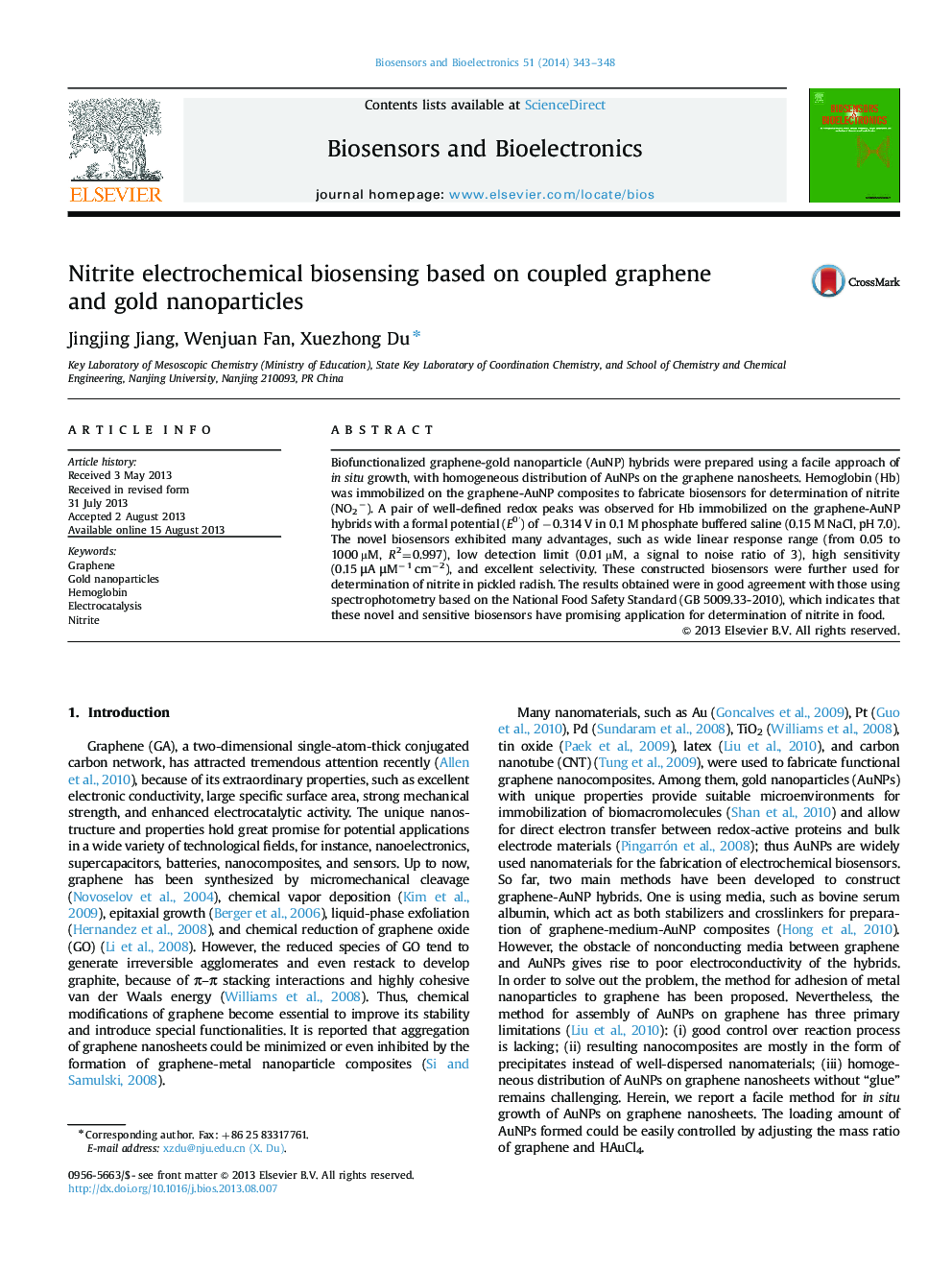| Article ID | Journal | Published Year | Pages | File Type |
|---|---|---|---|---|
| 866585 | Biosensors and Bioelectronics | 2014 | 6 Pages |
•Graphene-gold nanoparticle composites were prepared using an in situ growth.•Hemoglobin-functionalized nanocomposites for construction of biosensors.•Biosensors of nitrite with low detection limit and wide linear response range.•Practical determination of nitrite in pickled radish with the biosensors.
Biofunctionalized graphene-gold nanoparticle (AuNP) hybrids were prepared using a facile approach of in situ growth, with homogeneous distribution of AuNPs on the graphene nanosheets. Hemoglobin (Hb) was immobilized on the graphene-AuNP composites to fabricate biosensors for determination of nitrite (NO2−). A pair of well-defined redox peaks was observed for Hb immobilized on the graphene-AuNP hybrids with a formal potential (E0′) of −0.314 V in 0.1 M phosphate buffered saline (0.15 M NaCl, pH 7.0). The novel biosensors exhibited many advantages, such as wide linear response range (from 0.05 to 1000 µM, R2=0.997), low detection limit (0.01 µM, a signal to noise ratio of 3), high sensitivity (0.15 μA μM−1 cm−2), and excellent selectivity. These constructed biosensors were further used for determination of nitrite in pickled radish. The results obtained were in good agreement with those using spectrophotometry based on the National Food Safety Standard (GB 5009.33-2010), which indicates that these novel and sensitive biosensors have promising application for determination of nitrite in food.
